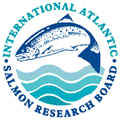Wild North Atlantic Salmon
A Species in Crisis
These are challenging times for wild Atlantic salmon. Abundance remains low, or even critically low in some areas.
Between 1983 and 2016 – a period of just 33 years – numbers of wild Atlantic salmon prior to any fishing taking place (known as the pre-fishery abundance, or PFA) fell by more than half. The rate of decline was most dramatic from 1983 to 1990, when salmon numbers fell from around seven million to five million fish. And while the rate of decline since 1990 has slowed, a further 33% of salmon have been lost – meaning the number in 2016 was estimated to be around 3.38 million.
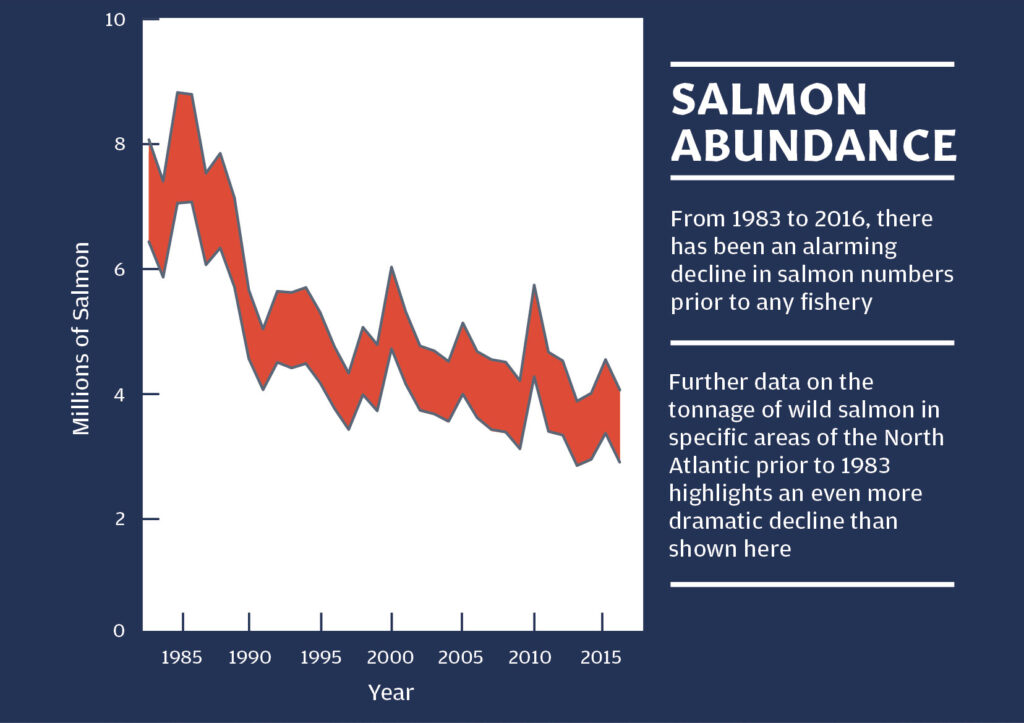
During the same period (1983 to 2016), there was a marked reduction in exploitation. Prior to the 1960s, countries made their own rules about salmon harvest with no international discussions. In October 1983, the Convention for the Conservation of Salmon in the North Atlantic Ocean – the birth of the North Atlantic Salmon Conservation Organization (NASCO) – created a large protected zone free of targeted fisheries for Atlantic salmon in most areas beyond 12 nautical miles from the coasts. This resulted in an immediate reduction in the commercial salmon fishery which, at its peak in 1973, harvested some 3.5 million salmon.
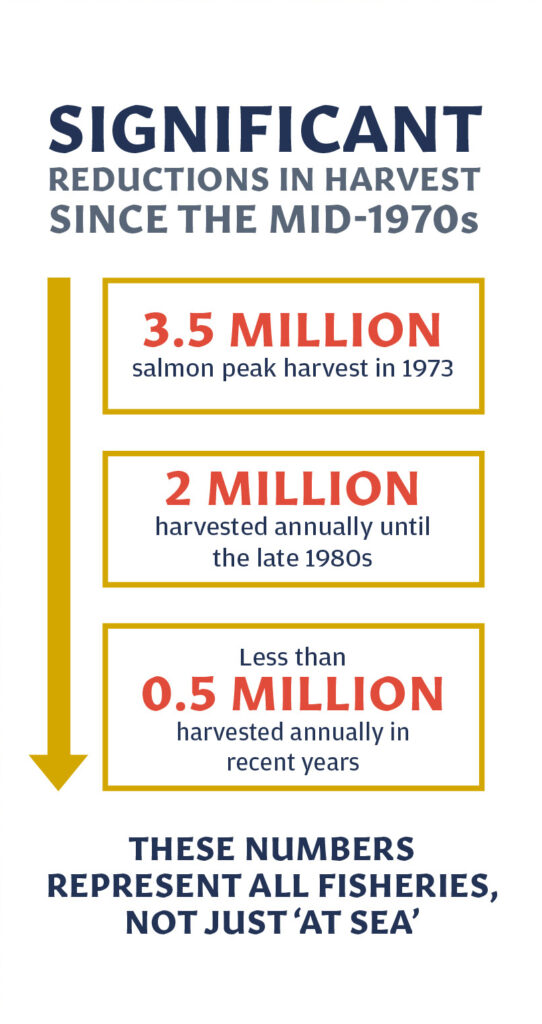
Despite these significant fishery reductions, numbers of Atlantic salmon continue to decline. We know this in part through the tagging of several million fish each year for assessment and research purposes. It now (since 2007) takes about double the amount of eggs to produce one adult (compared to the period prior to 1990) that will return to that same river to spawn – an indication of the multiple pressures facing the species throughout its complex life cycle.
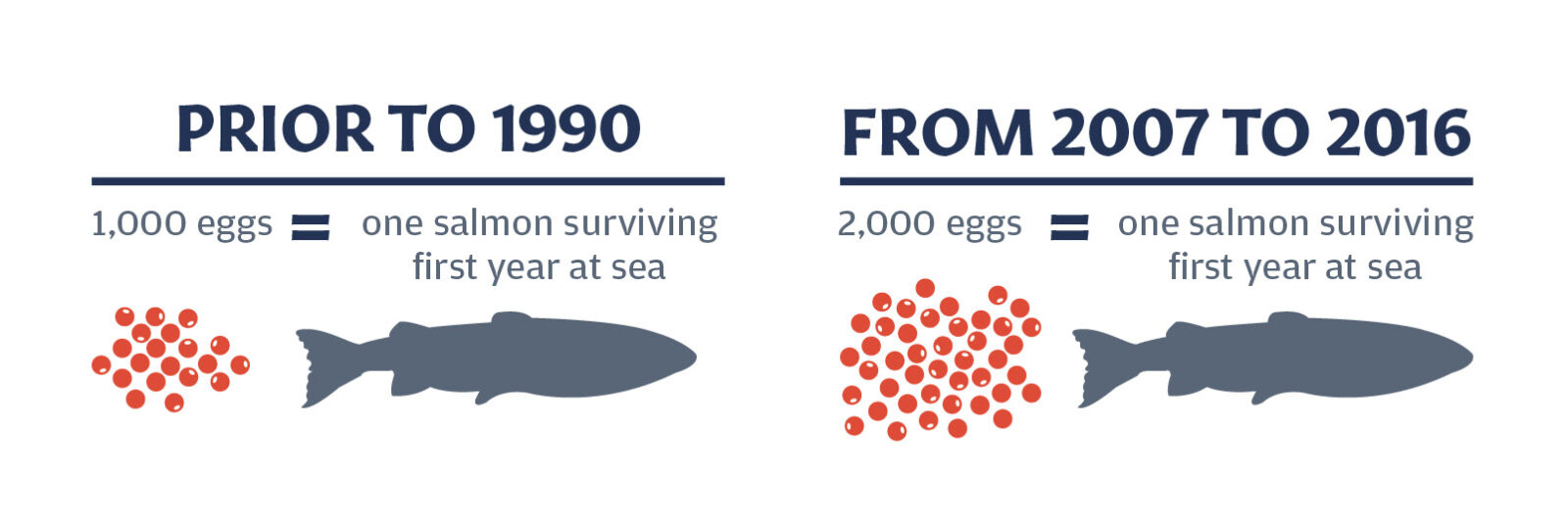
The State of North Atlantic Salmon Report
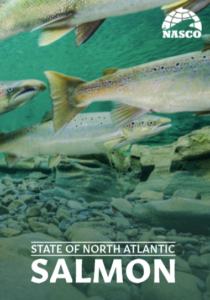 The State of North Atlantic Salmon Report was published by NASCO in 2019. It highlights the unique life cycle of the salmon, provides information on salmon abundance, the pressures it faces, and gives examples of how these pressures are being addressed. The report shows that wild Atlantic salmon provide society with a host of values, benefits and ecosystem services.
The State of North Atlantic Salmon Report was published by NASCO in 2019. It highlights the unique life cycle of the salmon, provides information on salmon abundance, the pressures it faces, and gives examples of how these pressures are being addressed. The report shows that wild Atlantic salmon provide society with a host of values, benefits and ecosystem services.
